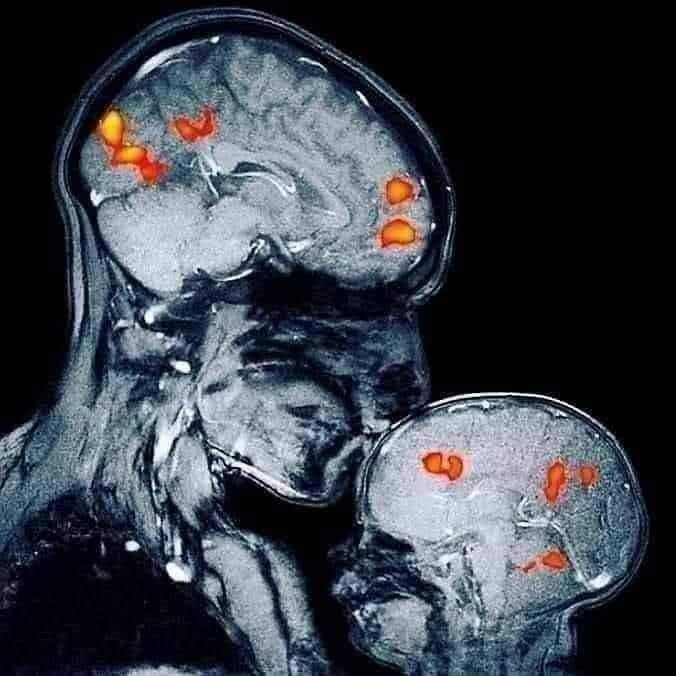Slogans are for people who need to be told what to think.
The image below is an fMRI captured in the Rebecca Saxe Lab, in the moment when a mother kisses her two-month-old son.
There is a lot of scientific publications with far-fetched conclusions based on fMRIs. However, this morning I'll make an exception and allow the beautiful narrative behind this image in the first plan.
The colour in the image corresponds to the brain activity; the imaging technique relies on the fact that cerebral blood flow and neuronal activation are coupled. Hence, the blood flow increases to the region if the an area of the brain is in use.
That leads us behind possible scientific explanation of this beautiful image. When the mother/father kisses the forehead of her/his child, that most likely results in dopamine release which gives the feeling of well-being. Kissing causes a chemical reaction in the little one's brain - which can be observed as a increase in the colour. Consequentially, as dopamine can reduce fear and increase confidence, this colour in the image could mean that the baby understood that it is protected.

This was a very late recording contrasting two news articles about Omicron - so called "Covid super-strain".
I know I haven't been around lately...work...life...However, the 12-years-old clip popped into my feed and I wanted to share it. The reason? This clip provides the great basic understanding into what are the issues with so-called "evidence" related to anthropogenic (human-induced) climate change and the lack of logic when it comes to the interpretation of such evidence. The sad reality is that even after 12 years from this clip, we are still forced to endure nonsensical conclusions that hurricanes hitting Florida are caused by big bad climate change.
The mainstream media is doubling down on the alarmism, and it is not hard to guess why. However, to be fair, consider my little observation an educated guess, an opinion, rather than the fact. Time will show whether I am right.
(1) 'Climate change affects everyone': Europe battles wildfires in intense heat by Reuters (https://www.reuters.com/business/environment/spain-portugal-battle-wildfires-heatwaves-scorch-southern-europe-2022-07-17/)
If you spent time in Southern Europe, Mediterranean, during summer season - July and August in particular - you probably know that heat-induced wildfires are nothing new. In fact, they are quite common and remarkably devastating for the affected communities, and I have witnessed several in person. Most of the time, the wildfires occur due to heat igniting grasses, especially in the areas where there are broken glass or broken bottles. The glass serves as an amplifier for the sun rays, especially, in the vicinity of dry grasses, or even dry pine needles, and as ...












